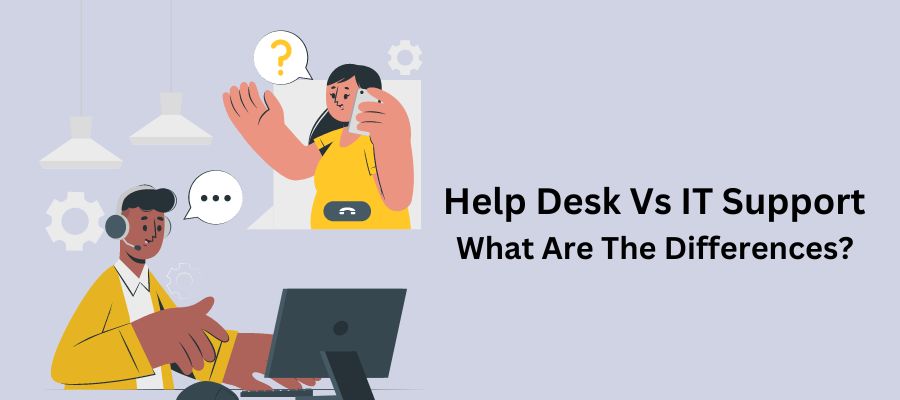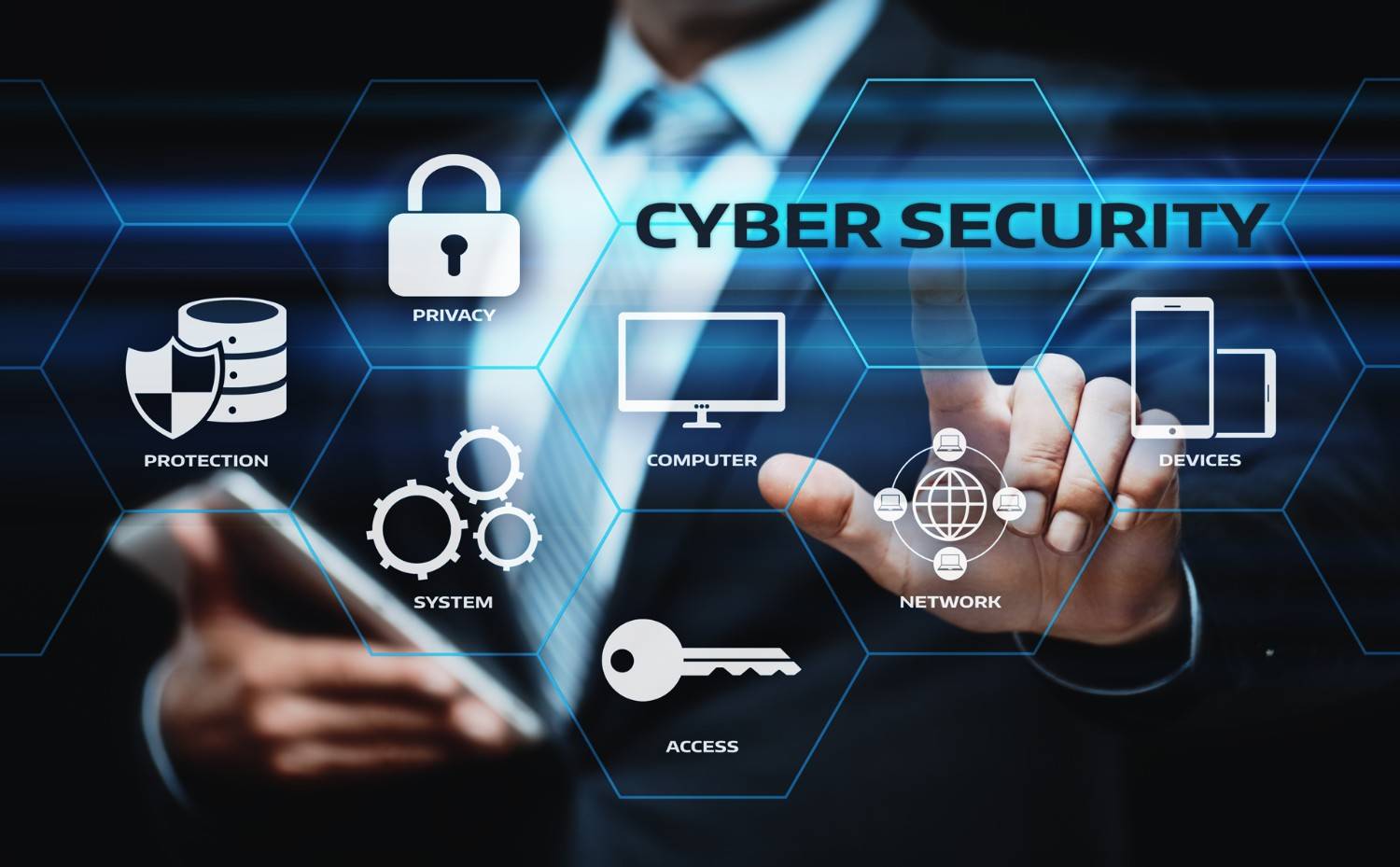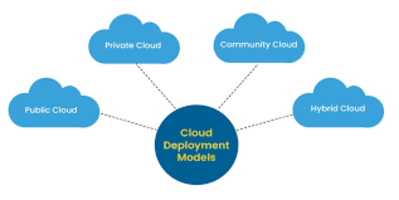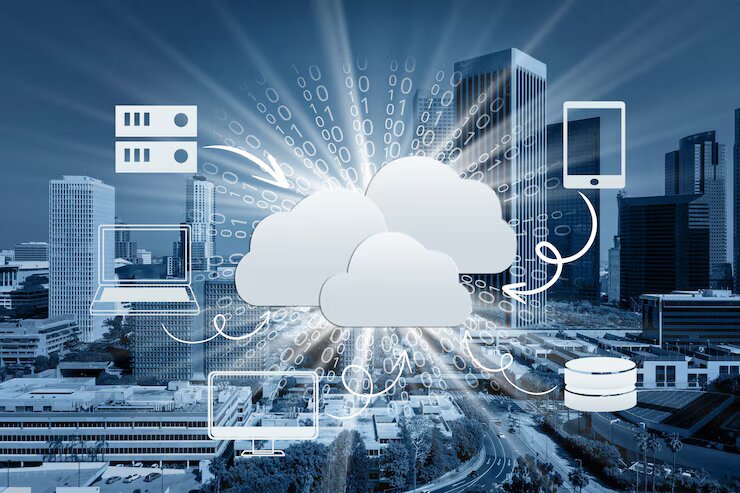Table of Content
Navigating the information technology landscape requires a clear understanding of the Help Desk and IT Support roles. While both functions aim to assist users and maintain system functionality, their scopes, responsibilities, and approaches differ significantly. This article delves into the fundamental differences between Help Desk and IT Support, elucidating their unique organizational roles. By comprehending these distinctions, businesses can better allocate resources, streamline operations, and enhance overall IT service management.
Help Desk Functionality
The Help Desk is one of the essentials of IT service management, the primary job of which is to provide first-line support to users. It is essential to serve as a helpdesk where customers with technical difficulties or questions about technology issues can seek assistance. Help Desk staff performs multiple functions in responding to customers’ IT needs, such as hardware or software problems, password resets, and the proper use of applications and systems.
Help Desks are primarily solutions for quickly identifying and resolving frequently occurring issues to help reduce losses in productivity arising from disruptions. They use ticketing systems to capture, prioritize, and track users’ complaints and other support requests, ensuring that each complaint is well-registered and addressed. It also assists in identifying issues that frequently arise so that measures can be taken to prevent similar occurrences in the future. If adequately staffed and equipped, the Help Desk keeps users happy and workers productive and bridges the information technology division and the organization’s employees.
IT Support Roles
IT Support is crucial in ensuring an organization’s IT systems are stable, functional, and secure. While the Help Desk targets a lower level of support to end-users, targeting first-level issues, IT Support works closer to the underlying problems. It monitors the overall status of the IT system.
The key responsibility of IT Support is to maintain the functionality of all IT infrastructure and provide IT services to the organization’s employees. This involves overseeing system operations, identifying and correcting technical problems, managing computer networks, implementing security features, and installing new systems and applications.
They independently monitor possible security weaknesses and hazards, putting into place preventive procedures to protect against cyber and data breaches. By delivering proactive maintenance, timely assistance, and strategic insights, IT Support ensures that the organization’s IT infrastructure remains robust, resilient, and aligned with its overall goals.
Key Differences
While both provisions aim to resolve and maintain user functionality and productivity, they function differently. Below, we will understand these distinctions in more detail.
Scope of Services
IT Support encompasses advanced technical tasks such as monitoring system performance, diagnosing and resolving complex technical issues, managing network infrastructure, implementing security measures, and providing strategic guidance.
On the other hand, the Help Desk primarily focuses on providing first-level support to end-users, handling routine tasks like troubleshooting hardware and software issues, resetting passwords, offering guidance on application usage, and managing user requests through ticketing systems.
Level of Expertise
The level of expertise differs between IT Support and Help Desk primarily in terms of the complexity and depth of technical knowledge required. IT Support personnel possess advanced expertise in troubleshooting complex technical issues, managing network infrastructure, implementing security measures, and providing strategic guidance for IT systems.
They typically have specialized certifications and extensive experience in IT administration and management. On the other hand, Help Desk staff focus on providing frontline support to end-users, handling routine technical problems, and offering guidance on using software applications.
Proactive vs Reactive
Proactive IT support anticipates and prevents technical issues through regular maintenance, monitoring, and implementation of preventive measures. In contrast, reactive IT support responds to issues as they arise, focusing on troubleshooting and resolving problems after they occur.
Similarly, a proactive Help Desk aims to empower users with self-service tools, knowledge bases, and training to prevent common issues. Conversely, a reactive Help Desk primarily addresses user-reported issues through troubleshooting and problem resolution. Proactive approaches minimize downtime, enhance system reliability, and prevent future issues, while reactive approaches prioritize issue resolution and user support after problems occur.
Tools and Technologies
IT management typically encompasses a range of software and features designed to help manage customer support and IT service requests efficiently. Below, we will understand the various tools that allow these functions operate.
Help Desk Tools
Help Desk tools typically encompass a range of software and features designed to assist in managing customer support and IT service requests efficiently. Here are some commonly utilized tools and features in Help Desk tools:
Ticketing System
- Manages and tracks customer issues.
- Assign tickets to appropriate personnel.
Knowledge Base
- Provides self-service options for users to find solutions.
- Stores FAQs, guides, and troubleshooting articles.
Live Chat
- Enables real-time communication with support agents.
- Includes chatbots for initial interactions.
Automation
- Automates repetitive tasks such as ticket routing and status updates.
- Includes automated responses and workflows.
Reporting and Analytics
- Generates reports on support metrics (e.g., response time, resolution rate).
- Provides insights into team performance and customer satisfaction.
Customer Relationship Management (CRM)
- Integrates customer data for personalized support.
- Tracks customer interaction history.
Multi-Channel Support
- Handles requests from various phone, email, social media, and web channels.
- Centralizes all interactions in one platform.
Collaboration Tools
- Enables team collaboration through internal comments and notes.
- Facilitates knowledge sharing among support agents.
Mobile Support
- Provides mobile apps for support agents to manage tickets on the go.
- Ensures support availability from anywhere.
Customer Feedback
- Collects customer feedback and satisfaction ratings.
- Analyzes feedback to improve support services.
Security Features
- Ensures data protection and privacy compliance.
- Includes features like access control, encryption, and audit logs.
IT Support Tools
IT Support Tools encompass a variety of software and applications designed to assist
professionals in managing, troubleshooting, and maintaining IT infrastructure. Here are some common categories and examples of these tools:
- Remote Access Tools
- Ticketing and Helpdesk Systems
- Network Monitoring and Management Tools
- System Monitoring and Management Tools
- IT Asset Management (ITAM) Tools
- Patch Management Tools
- Backup and Recovery Tools
- Endpoint Protection and Security Tools
- Configuration Management Tools
- Database Management Tools
- Collaboration and Communication Tools
- Virtualization and Cloud Management Tools
- Incident Response Tools
When Should You Rely on an IT Help Desk vs. Service Desk?
Rely on an IT Help Desk for immediate, reactive support addressing technical issues like troubleshooting hardware or software problems. Use a Service Desk for a broader scope, including service management, request fulfillment, and IT service lifecycle support. The Service Desk offers a strategic approach, encompassing change management, service improvement, and aligning IT services with business needs. Choose based on the complexity and scope of the support required.
Partner with ACT (Advanced Computer Technology) For Your Needs
Maximize your business’s potential with our premier IT service assistance! ACT provides comprehensive IT support tailored to your needs. Our expert team delivers top-tier help desk and service desk solutions, ensuring seamless operations and rapid issue resolution. Trust us to keep your IT infrastructure robust, secure, and aligned with your business goals. Contact us today and experience excellence in IT support!
Also Read – Why Choose a Local IT Support Company?
FAQ's
A help desk typically resolves technical issues such as password resets, software installations, connectivity problems, and troubleshooting hardware or software malfunctions.
Help desk technicians typically possess entry to mid-level technical expertise, with strong problem-solving skills and knowledge in troubleshooting common hardware and software issues.
IT support teams are best suited for resolving technical issues and assisting with IT service management and user requests.
IT support specialists need more advanced technical knowledge to troubleshoot complex issues and provide comprehensive support to users effectively.
The role of the IT support desk is to provide technical assistance and troubleshooting for users encountering issues with hardware, software, or network systems.





